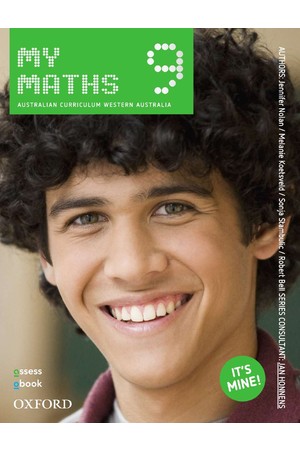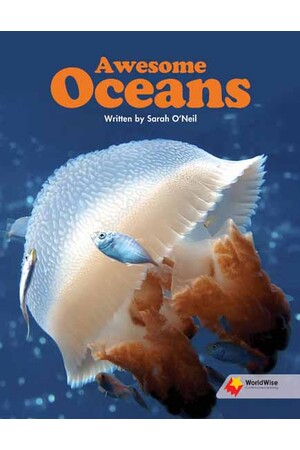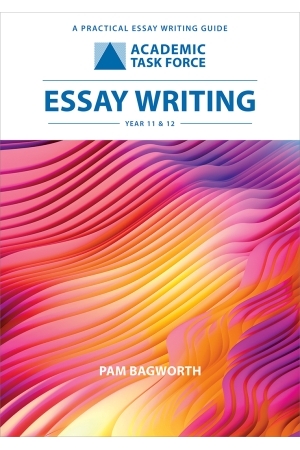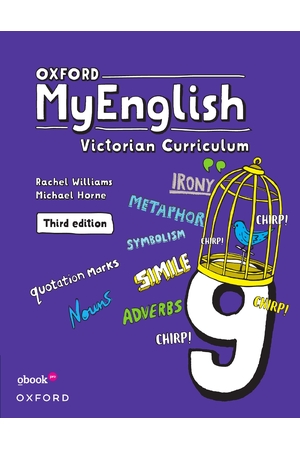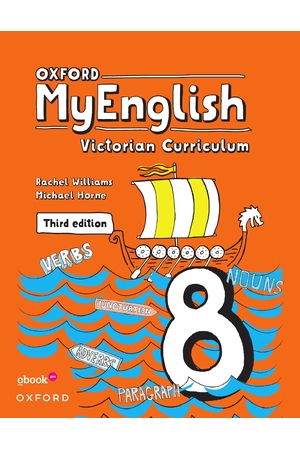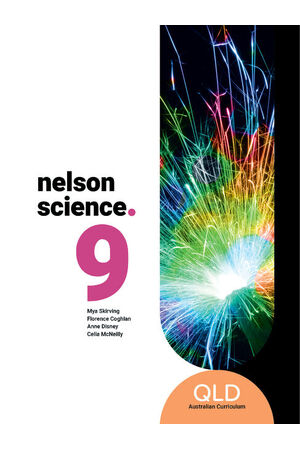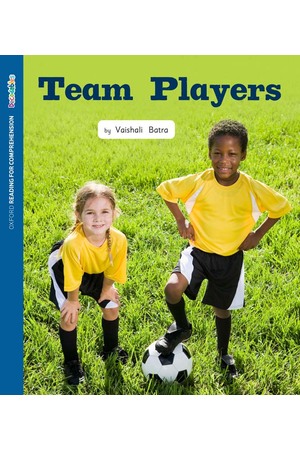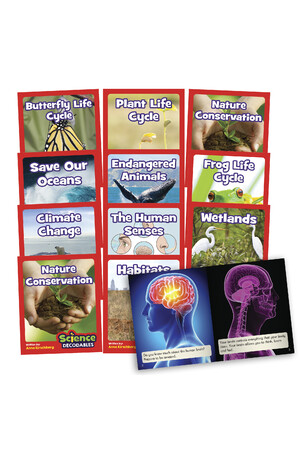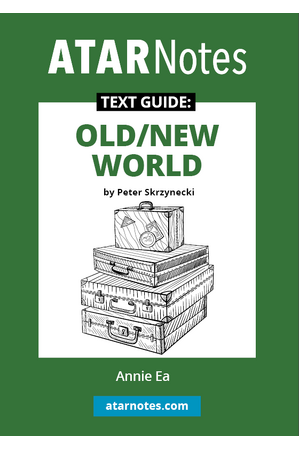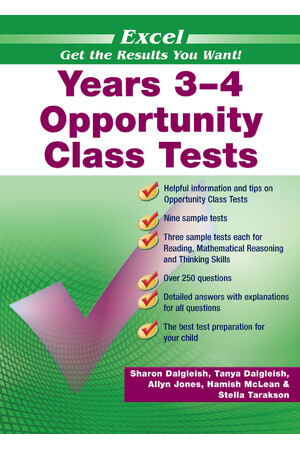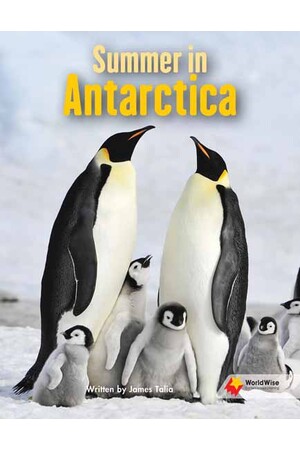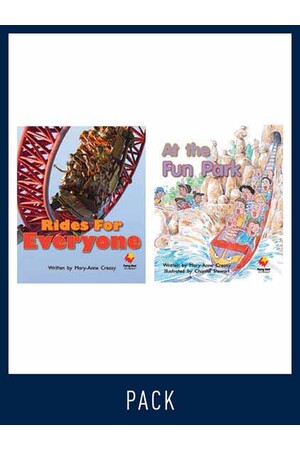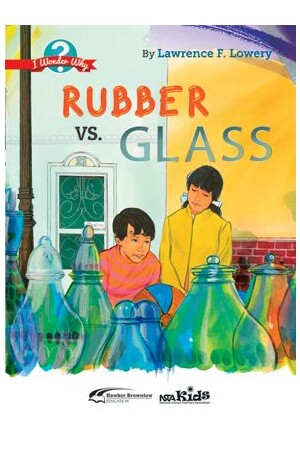Part of the series English Is... English for the Australian Curriculum Year 9.
View all products in this series

English Is ... English for the Australian Curriculum Year 9 & eBookPLUS
KEY FEATURES- Full coverage of the Australian Curriculum: English content descriptions allows students to achieve year level standards
- The text is always at the centre of the learning
- Differentiated activities provide all students with an entry point to the texts through a Getting started, Working through and Going further grading
- Sub-unit structure allows for a dip-in, dip-out approach
- Wordsmiths or mini-workshops drill down to teach key skills in a Tell me, Show me, Let me do it process
- Ready to Read prepares less able readers to engage with the texts
- Asian and Indigenous texts are featured along with classic, world, Australian and contemporary texts
- 'Need to know' explains key terms at point of need so that students learn English's metalanguage
- Language, Literature and Literacy links connect to the Australian Curriculum content descriptions
- Wide variety of assessment options at the end of every unit with rubrics to guide students
- Access from any digital device: PC/MAC/iPad/Android Tablet.
- Worksheets - Word documents designed for easy customisation and editing.
- Interactivities and games to reinforce and enhance student learning.
- eLessons - engaging video clips and supporting material.
- Weblinks to relevant support material on the internet.
- ProjectsPLUS - unique ICT-based projects that provide opportunities for students to demonstrate creativity, thinking skills and teamwork.
Contents
- About eBookPLUS ix
- How to use this book x
- Acknowledgements xii
- UNIT 1 Wordplay 1
- Why and how is language powerful? 1
- Powerful and playful words 3
- Tuning in 3
- 1.1 Changing words 4
- Where did English come from? 4
- What do early forms of English look like? 4
- Wordsmith . . . Loan words in English 7
- How does our language reflect what we value? 8
- 1.2 Powerful words 13
- How can words be used to persuade and promote? 13
- Wordsmith . . . Creating portmanteau words 18
- The language of propaganda 19
- 1.3 Playful words 22
- How does language create humour? 22
- The language of popular satire 22
- The language of literary satire 26
- Wordsmith . . . Writing humorously: Malapropisms and spoonerisms 29
- Fighting back with words 30
- Compose and create 32
- UNIT 2 Intertextuality 35
- How does intertextuality create richer reading and viewing experiences? 35
- What is intertextuality? 37
- Tuning in 37
- 2.1 Sharing the content of texts 38
- How do writers draw on previous ideas to create new works? 38
- Intertextual links through lm and painting 41
- Intertextuality in an artwork 43
- Wordsmith . . . Ways in which texts can connect: Content 44
- 2.2 Intertextuality and context 46
- How does society and culture affect intertextuality? 46
- Reinventing Wonderland 46
- Wordsmith . . . Ways in which texts can connect: Contexts 49
- 2.3 Intertextuality and creators 51
- How does intertextuality allow creators to bring their perspectives together? 51
- Intertextuality through parody and allusions 53
- Wordsmith . . . Ways in which texts can connect: Creators 56
- Compose and create 58
- VI English is … Year 9
- UNIT 3 Identity 61
- How is identity constructed? 61
- Who am I? 63
- Tuning in 63
- 3.1 Celebrity identity 64
- How does the media construct identity? 64
- Images of celebrity 64
- Wordsmith . . . Reading visual texts 65
- Celebrity identities in photographs and articles 66
- 3.2 Identities under threat 70
- How might political and social factors affect personal or group identity? 70
- Stolen children 73
- Wordsmith . . . Text features of conversations 77
- 3.3 Culture and identity 78
- How has our collective Australian identity changed over time? 78
- Multimodal stories of Australians from other lands 79
- Wordsmith . . . ‘Punctuation’ in spoken language 82
- The great Australian dream 83
- Compose and create 88
- UNIT 4 Imagery 91
- How and why does imagery appeal? 91
- What is imagery? 93
- Tuning in 93
- 4.1 Sensory images 94
- How do writers use imagery to appeal to our physical senses? 94
- ‘Sense’ appeal 95
- Wordsmith . . . Recognising sensory imagery 99
- 4.2 Imagery and emotion 101
- How do writers use imagery to evoke emotional responses? 101
- Wordsmith . . . Making annotations when analysing texts 105
- 4.3 Imagery that inspires action 107
- How can imagery inspire people to take action? 107
- Other views, other images 108
- Imagery to make a protest 111
- Wordsmith . . . Answering ‘how’ questions 114
- Compose and create 116
- UNIT 5 Interpretation 119
- How do we interpret texts, and what gives texts value? 119
- What does it mean to ‘interpret’? 121
- Tuning in 121
- 5.1 Open to interpretation 122
- What do we mean by perspectives, interests and values? 122
- Insiders and outsiders in literary classics 122
- Interpreting visual texts 127
- Wordsmith . . . The sentence 130
- 5.2 Creative interpretations 132
- How can we interpret texts imaginatively? 132
- Wordsmith . . . How to write cohesively 134
- Damsel in distress: The Lady of Shalott 136
- Interpretation through adaptation 140
- 5.3 Analytical interpretation 142
- How do we interpret texts analytically? 142
- Wordsmith . . . Writing a paragraph 145
- The analytical essay 146
- Compose and create 150
- UNIT 6 Relationships in narratives 153
- How and why do writers of narratives create relationships between characters? 153
- A recipe for creating character 155
- Tuning in 155
- 6.1 Characters in context 156
- How do writers create a context for their characters? 156
- Wordsmith . . . Showing versus telling in narrative 162
- 6.2 Character relationships and the plot 163
- How do writers use characters to drive the story to its climax? 163
- Wordsmith . . . Using character relationships to drive a plot 169
- 6.3 Using language to create relationships 170
- How does a writer bring characters to life? 170
- Wordsmith . . . Writing naturalistic dialogue 174
- Compose and create 176
- VIII English is … Year 8
- UNIT 7 Representing ideas 179
- How does language shape, reflect and represent ideas? 179
- What’s the big idea? 181
- Tuning in 181
- 7.1 Truth and reality 182
- Is your truth different to my truth? 182
- Representations of identity 188
- Wordsmith . . . Writing a running sheet for a multimodal presentation 192
- 7.2 The representation of ideas that inspire 193
- Whose reality is it? 193
- Anzacs in lm 194
- Another perspective on representing Gallipoli in lm 195
- Wordsmith . . . Vocabulary choices: Specificity versus abstraction 200
- 7.3 Representing ideas and values 202
- How are ideas and values represented in imaginative texts? 202
- The idea of romantic love in earlier times 202
- Wordsmith . . . Writing a comparative essay 204
- Romantic love in contemporary times 206
- Love, real and imagined 208
- Compose and create 210
- Projects PLUS 213
- Classic character profile 214
- Representing popular culture 216
- Glossary 218
- Subject index 220
- Author/Title index 222
View Other Year Levels in the 'English Is ... English for the Australian Curriculum' Series
| ISBN | 9781742467801 |
| Publisher | Jacaranda |
| Product Type | Student Books, |
| Year Level | Year 9, |
Be The First To Review This Product!
Help other Teacher Superstore users shop smarter by writing reviews for products you have purchased.







